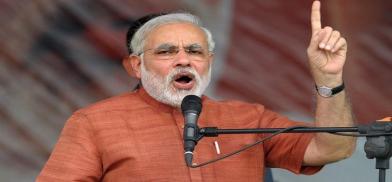South Asia's divisive politics: Modi election speech stirs up an 'artificial' boundary issue between India and Nepal
India’s position on the boundary issue is “well known, consistent and unambiguous”, the Indian Embassy in Kathmandu said, days after political parties in Nepal stoked a simmering territorial dispute in Lipulekh, Limpiyadhura and Kalapani, especially after Prime Minister Narendra Modi mentioned road construction in Lipulekh at an election rally in Uttarakhand state

India’s position on the boundary issue is “well known, consistent and unambiguous”, the Indian Embassy in Kathmandu said, days after political parties in Nepal stoked a simmering territorial dispute in Lipulekh, Limpiyadhura and Kalapani, especially after Prime Minister Narendra Modi mentioned road construction in Lipulekh at an election rally in Uttarakhand state.
“It is our view that the established inter-governmental mechanisms and channels are most appropriate for communication and dialogue. Mutually agreed boundary issues that are outstanding can always be addressed in the spirit of our close and friendly bilateral relations,” the Embassy said in a statement on Saturday.
According to reports in Nepali media, opposition parties in Nepal raised the issue after Modi spoke about the road built in Lipulekh during an election rally in Uttarakhand on December 30. Modi, while talking improved infrastructure in the mountainous state, informed that further work on the expansion of the road was going on. Lipulekh, which lies at the tri-junction between India’s Uttarakhand state, China and Nepal, is claimed by Kathmandu.
Criticising Modi’s statement, Oli’s party issued a statement, “the UML unwaveringly believes that construction of roads and other structures should be stopped. The issue should be promptly resolved through dialogue and no structure should be built at the state level until resolution is reached through dialogue.”
So far, the Government of Nepal hasn’t reacted officially to the fresh controversy. However, a few leaders of the Nepali Congress, mainly the ruling party, have issued statements, asking the government to issue a diplomatic note to India.
From a non-issue to the biggest row:
Ranjit Rae, a former Indian ambassador to Nepal, has provided a detailed account of the whole controversy in his book “Kathmandu Dilemma: Resetting India-Nepal Ties” published last year. According to him, the genesis of the whole controversy lies in the internal politics of Nepal at the time.
In November 2019, the Nepali Congress, then in opposition, first started protesting against the new Indian map—which New Delhi issued after the reorganization of the state of the Jammu and Kashmir—that also showed Kalapani. The party's aim was to “embarrass the Oli government” which was notorious for whipping up anti-Indian sentiments to bolster its nationalist credentials.
On 4 November 2019, Nepal’s Foreign Ministry issued a statement which only talks about "Kalapani"—not Lipulekh and Limpiyadhura, which lie well north and west of Kalapani respectively. Significantly, prior to that Kathmandu had never protested or raised the issue through official channels.
Later in May 2020, when Indian Defence Minister Rajnath Singh inaugurated a road that passes through a section of Dharchula-Lipulekh road, Nepal protested and summoned the Indian envoy. New Delhi said the matter would be discussed after the Covid-19 pandemic was over.
Under domestic pressure, including from his own party, the Nepal government, in a cartographic amendment, issued a new political map, incorporating not only Kalapani but also Limpiyadhura, and Lipulekh Pass, disputing an area of 335 sq km.
“Not only did Nepal shift its boundary with India several kilometers westwards, it also altered its already settled boundary with China,” Rae wrote in his book. New Delhi said “artificial enlargement of territorial claims will not be accepted by India.”
Road ahead?
Of late, the issue has been politicized in Nepal’s polity and every party, on different occasions, now tries to extract domestic political advantage from it. Just when Nepal, under Prime Minister Sher Bahadur Deuba, and India have started intensifying efforts, mainly through unofficial party-party dialogue, to improve bilateral ties, fresh impetus to the controversy could slow down the momentum.
Deuba, who is heading a government with a loose coalition, would be under added pressure to take up the issue – and be tough on India—which New Delhi is unlikely to consider under present circumstances and the highly polarized domestic politics in Nepal.
“By pushing through a constitutional amendment, Oli has tied the hands of his successor governments,” Rae wrote, adding that for any government in Nepal, it would be hard to get any future boundary agreement–especially when it involves loss of territory, which is almost certain in this case—passed through parliament with a two-third majority.
And New Delhi is unlikely to discuss it until it gets assurances from all major political parties of Nepal that they would accept the outcome of future boundary negotiations.
(SAM)









Post a Comment